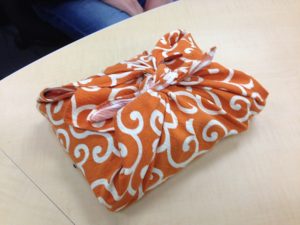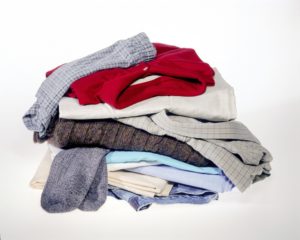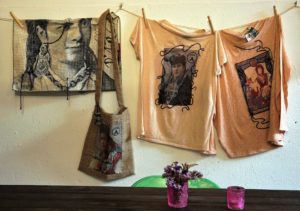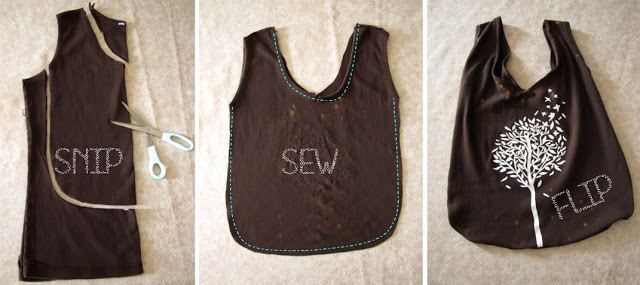Faetured Image from: upcyclingclothing.com
Ever since the industrial revolution made mass production a reality, the planet has been inundated with near-countless tons of waste. What most people don’t realize is, a lot of the stuff we think is worthless can actually be repurposed into something better.
In the past few decades, governments have tried to encourage people from reducing their trash via recycling. In fact, a community in Japan has been zero-waste for more than 30 years. Kamikatsu in Tokushima Prefecture has taken active steps in ensuring that all citizens reuse or repurpose all types of waste. And they’ve been successful: 30 years on and Kamikatsu has drastically reduced its carbon footprint.
But some people have taken it a step further. While recycling seeks to repurpose old and used things, upcycling seeks to take it further. Upcycling was introduced by architect and author William McDonough and chemist Michael Braungart in their book Cradle to Cradle: Remaking the Way We Make Things. Upcycling, also known as creative reuse, seeks to repurpose old items into a more productive version of their original form. This usually means that the upcycled item will be more environmentally-friendly, with more purposes and more value than its constituent parts. Not only does it reduce waste, upcycling also seeks to undo a lot of the environmental damage humans have done to the planet.
One of the best things about upcycling is that it can be used to repurpose old clothes and garments one of the most abundant items in the world. Upcycling gives new life to clothes and makes them even more useful. While it’s always a good thing to donate clothes to the needy, it would be counter-productive if one were to donate ratty, torn-up, stained, or otherwise unwearable clothes. By upcycling, you give yourself and other people the dignity of wearing useful clothes that are still fashionable.
Some people balk at the idea of upcycling clothes, thinking that it’s complicated and burdensome. But actually, there are plenty of simple and efficient ways to upcycle clothes into better things.
We’ve compiled a list of ways to help you take your clothes and turn it into something that is more useful, more environmentally-friendly, and easy to make:
Gift Wrappers
 It might sound strange to use cloth as a material for wrapping presents, but actually, people in Asia have been doing it for centuries. Instead of using costly and wasteful wrapping paper that you only use once, cloth wrappers are eco-friendlier and prettier. Old silk shirts or other soft materials are perfect for wrapping presents and can be reused indefinitely. Not only is it better for the environment, it’s also unique and a surefire way to start a conversation about upcycling.
It might sound strange to use cloth as a material for wrapping presents, but actually, people in Asia have been doing it for centuries. Instead of using costly and wasteful wrapping paper that you only use once, cloth wrappers are eco-friendlier and prettier. Old silk shirts or other soft materials are perfect for wrapping presents and can be reused indefinitely. Not only is it better for the environment, it’s also unique and a surefire way to start a conversation about upcycling.
Quilts
Bust out your needle and start quilting! Materials such as denim from old jeans, wool from sweaters, and cotton from shirts can be upcycled into beautiful hand-made quilts. This has a double effect of repurposing old bulky clothes into something useful, and creating something that is unique and highly personalized.
Household Rags and Towels
 Old cotton shirts make the best rags, specifically because they can be cut and shaped easily and can be used for a variety of chores. Once these rags are too harsh for your kitchen floors, upcycle them again by using them as car rags and to clean up spills in the garage. Old towels can also be upcycled into washcloths, dishrags, and others. You’d be surprised at how much you’ll save on paper towels!
Old cotton shirts make the best rags, specifically because they can be cut and shaped easily and can be used for a variety of chores. Once these rags are too harsh for your kitchen floors, upcycle them again by using them as car rags and to clean up spills in the garage. Old towels can also be upcycled into washcloths, dishrags, and others. You’d be surprised at how much you’ll save on paper towels!
Clothes for Kids and Pets
Get the family involved! Upcycling is a great way to bond with your kids, and you can do this by having them assist you with cutting and sewing used clothes into something that they can wear. Kids have an active imagination, teaching them how to upcycle and how to design their own clothes can stimulate their creativity and teach them the value of things. Alternatively, you can also create adorable clothing for pets!
Shopping Bag and Scarves
 Eco-bags are a great alternative to paper or plastic; they last longer and are better for the environment. You can push this eco-friendliness further, however, by creating your own shopping bag using bits and pieces of used clothing at home. You can also use strips of clothing to create cool and trendy scarves that will last longer and have more personality than store-bought ones.
Eco-bags are a great alternative to paper or plastic; they last longer and are better for the environment. You can push this eco-friendliness further, however, by creating your own shopping bag using bits and pieces of used clothing at home. You can also use strips of clothing to create cool and trendy scarves that will last longer and have more personality than store-bought ones.
Headbands and Hair Scrunchies
Hair scrunchies and headbands get lost or break easily, and many people don’t realize that constantly buying these items actually adds up without your knowledge. To prevent this, simply use strips of old clothing and repurpose them into unique headbands and scrunchies that won’t break easily, won’t get lost easily, cost nothing, and be friendlier to the environment.
No Limits to Upcycling
 The beauty of upcycling is that you are only limited by your imagination. While repurposing old clothes it’s great, you don’t have to stop there! Look around your house and open your mind to the possibilities! You’d be surprised at how many things you can create from items you already have lying around.
The beauty of upcycling is that you are only limited by your imagination. While repurposing old clothes it’s great, you don’t have to stop there! Look around your house and open your mind to the possibilities! You’d be surprised at how many things you can create from items you already have lying around.
Upcycling reminds us of the endless things we can create with our own bare hands. It’s an attempt at bringing the power of creation back into the hands of regular people and helping them wean themselves from relying on corporations for their necessities. In this regard, it’s not only great for the environment, it’s also a great way to stem consumerism and propagate a Do-It-Yourself work ethic that helps people take pride in creating something that is personalized for them.
By upcycling, you can help leave a better world for future generations. With the destruction that human greed and consumption has brought our planet, it’s time that we started healing and reversing the damage.
What are your thoughts on upcycling? Do you think it’s something you’d like to do? Or, have you already started and would like to share ideas on how to upcycle other things? Hit us up on the comments below, or send us an email with your ideas!

